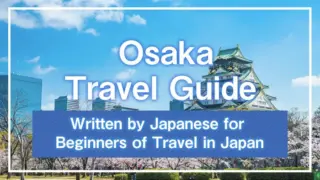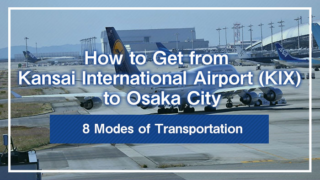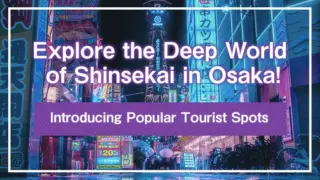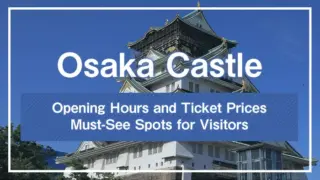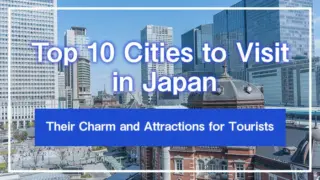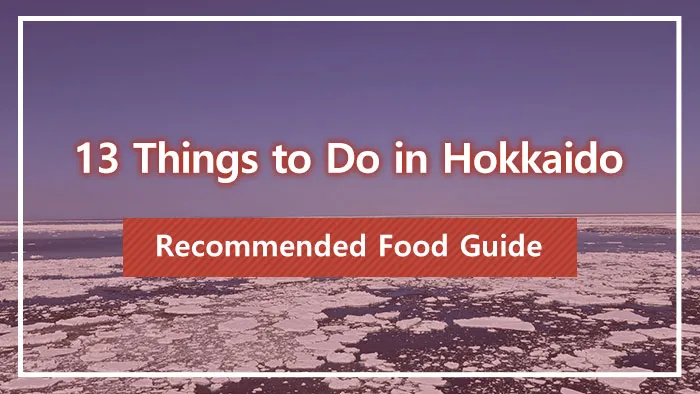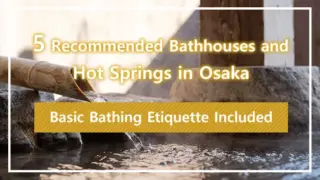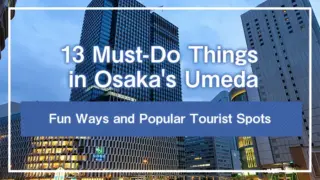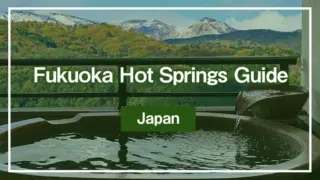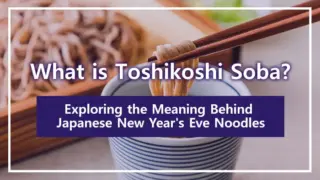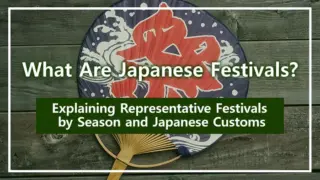Hokkaido is a region with magnificent nature and rich culture, located in the northernmost part of Japan. One of Hokkaido’s unique charms is that you can experience completely different scenery depending on when you visit—from winter snow landscapes and drift ice to lavender fields and highlands stretching across great wilderness in summer.
This article introduces Hokkaido’s attractions, including tourist destinations by area, recommended activities, and the food culture you should definitely experience when visiting Hokkaido. Please use this as a reference when planning your trip.
- 1. What kind of place is Hokkaido?
- 2. Things to do in Hokkaido
- 2-1. Enjoy the lavender fields of Furano
- 2-2. Tour Goryokaku
- 2-3. Enjoy the Sapporo Snow Festival
- 2-4. Enjoy Sapporo’s Clock Tower and Red Brick Government Building
- 2-5. See animals at Asahiyama Zoo
- 2-6. Enjoy the canals of Otaru
- 2-7. Enjoy activities at the Blue Cave
- 2-8. Visit Cape Soya
- 2-9. Experience nature on Rishiri Island
- 2-10. Enjoy hot springs in Tokachi
- 2-11. Enjoy the spectacular views of Shiretoko National Park
- 2-12. See drift ice
- 2-13. Experience Ainu culture
- 3. Dishes to eat in Hokkaido
- Conclusion
1. What kind of place is Hokkaido?
Hokkaido is a vast region located in the northernmost part of Japan, known as a tourist destination with natural beauty that changes with the seasons and a unique culture. It has a different climate and environment from the main island of Honshu, with snow-covered silver worlds in winter and cool, refreshing weather in summer.
The region is characterized by its vast natural landscapes, with attractions such as the World Heritage Site Shiretoko and the flower paradise of Furano. Hokkaido is an ideal destination for those who want to “immerse themselves in nature” or “escape from the hustle and bustle of the city.”
Additionally, the Ainu culture and unique food culture have taken root here, offering many discoveries for those seeking cultural experiences. With its magnificent nature and abundant tourist destinations, Hokkaido is a highly recommended place within Japan.
1-1. Hokkaido’s areas
Hokkaido has a large area, and understanding the characteristics of each region is important for enjoying tourism efficiently. Hokkaido is generally divided into six areas, each with different attractions. Here, we introduce the characteristics and main tourist spots of each area.
■Central Hokkaido Area
The Central Hokkaido area is located in the center of Hokkaido and includes Sapporo City, which serves as the administrative and economic center. For tourism, in addition to urban attractions such as the Sapporo Snow Festival, Odori Park, and Sapporo Clock Tower, you can also enjoy nature and hot springs at places like Lake Shikotsu and Jozankei Onsen. It has good access from New Chitose Airport and is popular as a base for Hokkaido tourism.
■Southern Hokkaido Area
The Southern Hokkaido area is the region that connects to Honshu and features historic buildings and port town atmosphere. Famous attractions include Goryokaku, the night view from Mt. Hakodate, and the red brick warehouse district. It is also used as a gateway for the Tsugaru Strait Ferry and Hokkaido Shinkansen.
■Northern Hokkaido Area
The Northern Hokkaido area is located at the northernmost tip of Hokkaido and is known for its harsh natural environment and magnificent scenery. Popular spots include Cape Soya, Japan’s northernmost point, and the Biei and Furano areas with beautiful flowers. You can enjoy different landscapes by season, including lavender fields in summer and snow landscapes in winter.
■Okhotsk Area
The Okhotsk area extends across northeastern Hokkaido and is known for drift ice and the bounties of the sea. Shiretoko National Park is also included in this region and has gained attention as a World Heritage Site treasure trove of nature.
■Tokachi Area
The Tokachi area features vast plains and rich agricultural zones, where you can enjoy beautiful rural landscapes and gourmet experiences. Centered on Obihiro, there are attractions such as Tokachigawa Onsen, Hanabatake Ranch, and cafes famous for sweets. With a high percentage of sunny days, it’s also an area suitable for outdoor activities.
■Kushiro/Nemuro Area
This area, spreading along the Pacific coast of eastern Hokkaido, is a natural treasure house where you can encounter untouched wetlands and wildlife. At Kushiro Marsh and Lake Akan, you can see animals such as red-crowned cranes, Hokkaido deer, and Hokkaido red foxes. Marine products are also abundant in Nemuro and Kushiro, offering a rich food experience.
1-2. Hokkaido’s temperature and appropriate clothing
Located at the northernmost part of Japan, Hokkaido’s temperatures are generally lower throughout the year compared to the main island. When traveling, be sure to prepare clothing appropriate for the season.The cold is particularly severe in the mornings and evenings, so it’s advisable to bring not only thin clothes but also easily removable outerwear or cold weather gear.
In spring and autumn, daytime temperatures are often around 10°C, making light coats or windbreakers comfortable. Summer (June to August) is relatively pleasant with maximum temperatures around 25°C, but it gets cold in the mornings and evenings, so prepare cardigans or long-sleeved cover-ups.
Hokkaido’s winter (November to March) is particularly harsh, with temperatures below freezing not uncommon. Full-scale cold weather protection such as down coats, gloves, hats, and boots is necessary. Check the weather forecast before your trip and enjoy Hokkaido’s attractions with appropriate clothing.
1-3. Accessing Hokkaido
There are multiple ways to access Hokkaido, which can be selected according to your travel destination and departure point. The most common and convenient route is to arrive at New Chitose Airport by plane.
New Chitose Airport offers good access, about 40 minutes by train from Sapporo City, with numerous direct flights from major cities such as Tokyo, Osaka, and Nagoya. International flights are also available, allowing direct visits from overseas.Local airports are also well-developed, with convenient options including Asahikawa Airport near Furano and Biei, Obihiro Airport as a gateway to the Tokachi region, and Memanbetsu Airport for easy access to the Shiretoko area. Choosing an airport according to your destination area can shorten travel time.
If using railways, it’s possible to travel from the main island to Shin-Hakodate-Hokuto Station via the Hokkaido Shinkansen. The charm of the Shinkansen is that you can enjoy the scenery during your journey, including the valuable experience of passing through the Seikan Tunnel. Choose the optimal access method according to your travel style and place of stay.
2. Things to do in Hokkaido
Hokkaido is a tourist destination with diverse attractions, including seasonal natural beauty, rich culture, gourmet experiences, and historical buildings. You can have experiences not available elsewhere, such as lavender fields, drift ice, and interactions with animals, with new discoveries every time you visit.
Here are some recommended activities and tourist spots that you should especially experience in Hokkaido.
2-1. Enjoy the lavender fields of Furano
Furano is known for its landscapes of lavender blooming across the fields in summer and is one of Hokkaido’s most representative tourist destinations. Especially during the peak season in mid-July, the purple flower fields spread across the hilly terrain, captivating visitors. Representative spots include “Farm Tomita” and “Highland Furano,” where you can enjoy fragrant flower fields.
The charm of the lavender fields extends beyond the visual to the senses of smell and taste. Within the farms, lavender-flavored soft serve ice cream and goods are sold, perfect for souvenirs. During the tourist season, the sightseeing train “Norokko-go” also operates, allowing you to enjoy the spectacular views from the train window. For those who want to spend relaxing time in nature, Furano’s lavender fields are an ideal spot.
2-2. Tour Goryokaku
Goryokaku is a star-shaped Western-style fortress in Hakodate City, a valuable historical site that strongly reflects the history of the late Edo period. It was the stage for fierce battles between the former shogunate and new government forces during the Hakodate War. Currently maintained as “Goryokaku Park,” the moat-surrounded unique star shape creates a beautiful landscape.
In spring, about 1,500 cherry trees bloom, making it one of Hokkaido’s best cherry blossom viewing spots. The adjacent “Goryokaku Tower” offers a spectacular view overlooking the entire fortress. The tower also features rich historical exhibitions, making it recommended for fans of the late Edo period. Goryokaku, where history and nature harmonize, is a must-visit tourist destination when visiting southern Hokkaido.
2-3. Enjoy the Sapporo Snow Festival
The Sapporo Snow Festival is a major winter event held in early February in Sapporo City. It’s a large-scale festival that attracts over 2 million visitors from Japan and abroad, with various snow and ice sculptures displayed across three venues: Odori Park, Susukino, and Tsudome. Especially at Odori Park, giant snow sculptures over 10 meters tall line up, with illuminations to enjoy at night. The fantastic scenery created by snow and light is a winter tradition unique to Hokkaido.
Activities suitable for families with children, such as ice slides and snow mazes, are plentiful, and stalls offering local gourmet foods are also a highlight. It’s recommended to be well-prepared for the cold and thoroughly enjoy the night illuminations.
2-4. Enjoy Sapporo’s Clock Tower and Red Brick Government Building
Many buildings that evoke Hokkaido’s history remain in Sapporo City. The prime examples are the “Sapporo Clock Tower” and the “Former Hokkaido Government Office Building (Red Brick Government Building).”The Sapporo Clock Tower is a wooden structure built in 1878 that continues to stand in the center of the city and is cherished as a symbol of Sapporo.
出典:Sapporo Snow Festival「Sapporo Snow Festival」
The Red Brick Government Building, constructed during the Meiji era, is known for its imposing American Neo-Baroque style architecture. Inside, there are document exhibition rooms and history galleries where you can learn about Hokkaido’s history. The flower beds and illuminations that change with the seasons also please visitors’ eyes.
2-5. See animals at Asahiyama Zoo
Asahiyama Zoo in Asahikawa City has become nationally famous for its “behavioral exhibits” where you can observe animals’ behaviors and ecology up close. Unlike traditional “just-looking zoos,” its exhibition method is highly valued for allowing visitors to see the animals’ natural behavior in environments close to their natural habitats.
Particularly popular are the tunnel-type tank where seals swim and the dynamic polar bear exhibits. The penguin walk is a famous winter-only event, with their march through the snow enjoyable for both children and adults. This spot is recommended not only for animal lovers but also for families and couples.
2-6. Enjoy the canals of Otaru
Otaru is a port town about 30 minutes by train from Sapporo, where you can feel history and romance. The most famous spot is the “Otaru Canal,” which once served as a logistics hub. Now redeveloped as a tourist spot, the stone-paved road with gas lamps creates an atmospheric landscape.
Walking along the canal, you’ll find historical warehouse groups lined with glass craft shops, music box shops, and cafes. Canal cruises also allow you to enjoy the townscape of Otaru from the water, with different atmospheres during the day and night. Otaru, where retro townscapes and modern tourism blend, is perfect for those wanting a leisurely trip.
2-7. Enjoy activities at the Blue Cave
The “Blue Cave” in “Niseko-Shakotan-Otaru Kaigan Quasi-National Park” is a spot where you can closely experience the transparency of Hokkaido’s sea and the mystery of nature. It was named after the phenomenon where the inside of the cave is dyed a fantastic blue when sunlight enters the water. Cruise tours departing from Otaru are popular, allowing you to easily enjoy the spectacular view.
The most beautiful colors can be enjoyed during sunny days in summer, so it’s good to plan carefully about when to visit.
2-8. Visit Cape Soya
Cape Soya is the northernmost cape in Japan, with the “Monument to the Northernmost Point of Japan” built at latitude 45°31’N as its symbol. Looking across the Okhotsk Sea, you can sometimes see the silhouette of Sakhalin on clear days. The sense of visiting this ultimate place and the feeling of achievement attract travelers to Cape Soya.
Though located in a harsh natural environment with strong winds, the magnificent contrast of sea and sky creates a spectacular view worth seeing, making it a place you’ll want to visit at least once as a highlight of your Hokkaido journey.
2-9. Experience nature on Rishiri Island
Rishiri Island is a volcanic island floating in the Sea of Japan north of Hokkaido, with Mount Rishiri, called “Rishiri Fuji,” as its symbol. The entire island is surrounded by nature, allowing for various activities such as mountain climbing, trekking, cycling, and enjoying seafood tourism.
Many places are designated as natural parks, with viewpoints dotted along the road circling the island. The views from Princess Pond and Cape Kutsukata are especially spectacular, attracting many tourists with cameras. This island is perfect for those who want to reset their minds in untouched nature away from daily life.
2-10. Enjoy hot springs in Tokachi
The Tokachi area is a region in Hokkaido known for its high percentage of sunny days and prosperous agriculture. In Tokachi, there are quality hot spring areas surrounded by nature. Among them, the famous “Tokachigawa Onsen” offers a rare plant-based moor hot spring in Japan. This spring quality is known for its high beauty effects as it contains natural organic matter formed by accumulated ancient plants.
You can spend a luxurious time warming your body in the hot springs while enjoying the views of Hokkaido’s vast sky and land. It’s also recommended as a healing spot to visit between sightseeing and driving.
2-11. Enjoy the spectacular views of Shiretoko National Park
Shiretoko National Park is a World Natural Heritage Site located in eastern Hokkaido, a valuable area where untouched nature remains. In this land where wildlife such as brown bears, spotted seals, and orcas live, you can feel the way of life coexisting with great nature. Popular scenic spots for tourists include Shiretoko Five Lakes and Furepe Falls.
The different landscapes across seasons are also attractive, with deep greens in summer, autumn leaves in fall, and drift ice decorating the shores in winter. Rules are established for tourism from an environmental protection perspective, requiring nature-conscious travel. This is truly a special place where the “original landscape” of Hokkaido remains.
出典:Ministry of the Environment Government of Japan「Shiretoko National Park」
2-12. See drift ice
Drift ice, known as a winter tradition of Hokkaido, is a precious natural phenomenon that can only be seen in regions bordering the Sea of Okhotsk. From late January to early March, the sight of ice masses from the northern sea covering the sea surface is a spectacular view worth seeing once.
Especially from Abashiri and Monbetsu, you can experience drift ice up close on drift ice sightseeing icebreakers. The sound and vibration of the ship breaking through the ice, and the silver world spreading before your eyes are impressive.
Active experiences such as walking on ice and drift ice diving are also available, offering participatory enjoyment beyond just viewing. With proper cold weather preparation, you can enjoy the winter spectacle unique to Hokkaido.
2-13. Experience Ainu culture
The culture of the Ainu, the indigenous people of Hokkaido, is an essential presence when discussing Hokkaido’s history and nature.In recent years, its cultural value has been reevaluated, with increasing opportunities to learn through tourism.
“Upopoy (Symbolic Space for Ethnic Harmony)” in Shiraoi Town is a national facility where you can comprehensively experience Ainu language, performing arts, crafts, and food culture.
Within the facility, there are Ainu traditional dance performances, traditional costume try-ons, and workshops for making crafts, allowing children to adults to learn while having fun. This is a valuable opportunity not only as part of tourism but also to deeply understand the culture rooted in Hokkaido’s land. It’s a highly worthwhile spot to visit for those interested in history and ethnicity.
出典:Upopoy National Ainu Museum and Park「Journey into the heart of Ainu culture.」
3. Dishes to eat in Hokkaido
Hokkaido is known as a food treasury with fresh seafood, dairy products, and ingredients unique to cold regions. Each area within Hokkaido has distinctive local specialties, allowing you to enjoy both tourism and taste.
To make your trip memorable, be sure to try the flavors that can only be experienced in Hokkaido.
3-1. Sushi and sashimi
Sushi is a traditional Japanese dish where fresh seafood is placed on vinegared rice, while sashimi involves eating sliced fish as is. Hokkaido’s sushi and sashimi are particularly popular for their freshness and variety of ingredients.
Surrounded by the sea on three sides, Hokkaido offers scallops, sea urchin, salmon roe, crab, and more, all fatty and rich in flavor. Local sushi restaurants provide fish caught fresh from the port, offering significantly higher freshness and noticeable taste differences.
Even “conveyor belt sushi restaurants,” casual establishments, are reputed to be high quality, allowing you to enjoy authentic taste at reasonable prices. Fully enjoying the bounties of the sea is the real pleasure of traveling in Hokkaido.
3-2. Crab
Crab is a representative winter delicacy in Japan that can be enjoyed through various cooking methods, including steaming, grilling, or as sashimi. In Hokkaido, various types of crabs are landed, including king crab, snow crab, and hairy crab, popular for their thick, juicy meat and rich crab miso.
At markets and specialty stores, you can taste freshly caught or just-boiled crabs, and crab hot pots are commonly eaten in winter. The fresh taste that only a seaside region can offer is a luxurious experience unique to Hokkaido.
3-3. Ramen
Ramen, a noodle dish, has countless variations based on combinations of soup, noodles, and toppings.Hokkaido is known for its three major ramen styles: “Sapporo Ramen,” “Asahikawa Ramen,” and “Hakodate Ramen,” each offering distinctive flavors.
The soups of Hokkaido’s local ramen are characterized by their rich, deep flavors. Many tourist areas have ramen specialty shops, making it easy to enjoy local tastes. Ramen hopping in Hokkaido is an excellent opportunity to experience food culture.
3-4. Jingisukan
Jingisukan is a local Hokkaido dish where lamb meat and vegetables are grilled on an iron pan. The meat is often lamb, known for having less gaminess and being tender.
Cooking on a specialized dome-shaped pan allows the meat juices to soak into the vegetables, resulting in a flavorful finish. Local specialty shops offer Jingisukan seasoned with secret sauces, which pairs excellently with beer. As a food that can only be tasted in Hokkaido, it’s popular with many travelers.
3-5. Ice cream
Hokkaido’s ice cream is attractive for its rich taste made with high-quality fresh milk, taking advantage of the prosperous dairy farming in the region. Despite being a cold area, ice cream is popular, with unique flavors available throughout Hokkaido. In particular, farm-direct shops offer fresh ice cream made with freshly squeezed milk.
There are many shops offering handmade ice cream with carefully selected ingredients, including Hokkaido-specific flavors like lavender, melon, and corn. Perfect as a dessert during sightseeing, it’s a local sweet that can be enjoyed regardless of season.
Conclusion
Hokkaido is a premier Japanese tourist destination where nature, culture, and gourmet experiences come together as one. From Furano with its blooming lavender to the World Heritage Site Shiretoko, and the romantic Otaru Canal, each area has uniquely rich attractions, offering fresh surprises with each visit. There are also plenty of spots enjoyable for both children and adults, such as large-scale events like the Sapporo Snow Festival and the behavioral exhibits at the popular Asahiyama Zoo.
Whichever season you visit, there are landscapes and experiences unique to that time, making it a place that will leave a deep impression in travelers’ memories.
*This article is based on information available as of April 2025.

